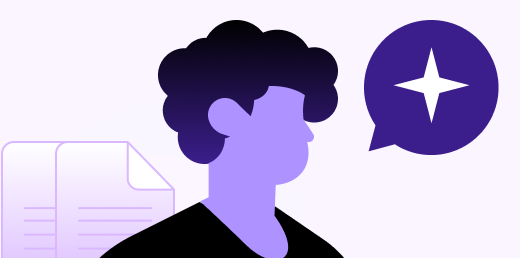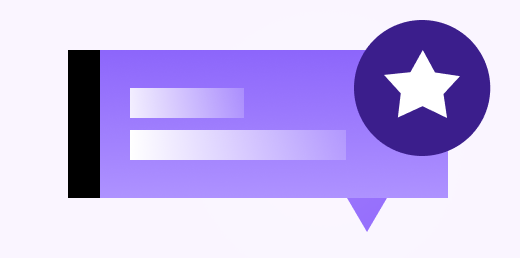The HR Talent Dilemma: Solve It With SkillSearch Powered by Microsoft Viva
As an HR leader, you face a historic amount of disruption thanks to high talent turnover and low workplace resiliency. Your timeline from planning to action keeps shrinking, while the imperatives from the C-suite increase.

During the recent coronavirus pandemic, you pivoted from in-person to fully remote workplaces. The stress your employees braved during COVID-19 prompted a mass exodus by them in 2021 and 2022. This high turnover and the subsequent challenge of retaining people with the right skills and desire to create new skills — especially for leading tech like data, artificial intelligence and machine learning, internet of things, cloud, and blockchain — tests you to meet requirements key to business growth.
In a recession environment, you rebalance your workforce for the future and invest in HR technology to attract and retain critical talent and skills.
So, with both COVID-19 and a recession in focus, you fixate on creating a resilient workforce that can withstand current and future shockwaves.
As a result, HR leaders expect to increase spending on HR technology solutions like SkillSearch Powered by Microsoft Viva to help them easily search for specific skills across their organization. The end game is for you to unlock your employees’ potential and reduce the pressure of increasing headcount, as business initiatives require new skills.
High turnover
For organizations to successfully operate in the current business climate, they must improve their employee experience. This means you must ensure employees own the right skills and reduce employee churn, as a top priority. In turn, this supports profitable growth.
According to the U.S. Chamber of Commerce, a lack of opportunity to advance or for career growth ranked #1 (tied with low pay) as a reason employees left their jobs in 2021. And McKinsey reported in 2022 that the top reason for high employee turnover was a lack of career development (41%), followed closely by a lack of meaningful work (31%).
HR leaders expect high turnover (average total U.S. annual employee turnover reported at 47.2% in 2022) to stay a concern for the near future. It detrimentally affects your organization through:

Increased recruitment costs

Lost revenue due to attrition of sales and account teams

Lack of knowledge and experience that results in decreased productivity

Too much time constantly training new employees and/or retraining existing employees for new roles
Without fail, acquiring internal talent with the proper skills and relying on external recruitment to find those skills drive up your cost of business operations. Studies indicate that it can cost as much as $75,000 to replace a person who earns an annual salary of $50,000.
Low workplace resiliency
Workplace resilience refers to your employees who deal with an obstacle or difficulty and then manage the stress and overcome the situation.
If you operate in a vulnerable workplace, this can cause high staff turnover, lower productivity, low employee engagement, high rates of sick leave, low morale, and an overall lack of job satisfaction.
Those organizations that adapt strategies and practices to fit the real-world talent pool, which is now more complex and increasingly filled with nontraditional workers, gain access to skills and experiences to accelerate growth, innovation, and agility. (Deloitte 2023 Human Capital Trends)
Less employee turnover, strong resilient workforce critical for long-term success
If you unsuccessfully reduce employee turnover and build a resilient workforce, it can have several negative consequences for your organization. Consider the following adverse outcomes:
 |
 |
 |
|
Increased costs |
Loss of productivity |
Crushed employee morale |
 |
 |
|
|
Deficit of institutional knowledge |
Reputational damage |
|
Resolve turnover, workplace resiliency challenges
The real problem that you want to solve is to ensure your organization has a stable and engaged workforce — one that adapts to changes, performs well, and drives business success.
You can reduce employee turnover and improve workforce resiliency by increasing employee engagement, advancing hiring practices, providing training and development opportunities, and immersing in strategic workforce planning. By adopting a comprehensive approach to these challenges, you help your organization achieve long-term business success.
Now, there are many strategies you can and must enlist, including competitive compensation packages, a supportive work environment, and cultivating a high-caliber work culture.
As McKinsey & Co. reported in 2022, the #1 reason for turnover was a lack of career development (41%) and a lack of meaningful work (31%). By adding growth opportunities for your employees, you boost retention, because employees see opportunities for career growth and development. You must also administer clear career paths, skills-development training, and new circumstances for other functions to tap the unique skills of employees and help them advance in their careers.
SkillSearch powered by Microsoft Viva for high turnover
SkillSearch powered by Microsoft Viva enables your organization to instantly search internal profiles for specific skills to help reduce external hiring, improve employee satisfaction, and streamline HR administration.
Why the Microsoft Viva platform? Because it identifies collaboration patterns that impact productivity, workforce effectiveness, and employee engagement across your organization. This prevents employee burnout, increases effectiveness, identifies trends, and structures people’s data for analysis.

With SkillSearch, for example, you’re able to implement a custom, web-based application to help predict employee dismissal risk, using corporate employee data, machine learning, and data science. This generates a dismissal prediction report, facilitates higher employee retention, and enhances employee satisfaction.
Overall, internal and external benefits include, but are not limited to:

Lowered costs through employee burnout prevention

Elevated effectiveness through personalized tips

Identified trends that must be prioritized

Structured people data
SkillSearch powered by Microsoft Viva for low workplace resiliency
Propped up as a communication platform, SkillSearch powered by Microsoft Viva — and Viva’s ability to give employees a personalized destination to discover relevant news, conversations, and tools for success — feeds a growth platform for talent development. This empowers transparent and focused growth and outlines clear expectations for your employees.
The benign outcome includes new opportunities for business and services based on the continuous improvement and standard development of mature and experienced talents and skills.
Conclusion
To better abate employee turnover and create a resilient workforce with the right skills, you must anticipate future skill needs and invest in training and development programs that align with business growth. This requires a proactive approach to talent management and a willingness to invest in your employees' long-term development, rather than simply fill immediate skills gaps.
What’s more, you must ensure your organization supplies adequate support and resources to promote employee well-being, such as mental health assistance, flexible work arrangements, and work-life balance.
You can achieve these standards and efficiently manage employee turnover and low workplace resiliency by collaborating with a trusted technology partner like SoftServe, a Microsoft Gold Partner. Through SoftServe’s SkillSearch powered by Microsoft Viva and putting in place strategic workforce planning, you create a culture of continuous learning, whereby your employees seek out new knowledge and skills.
Meanwhile, with people data analytics and monitored employee trends, you build a resilient workforce that’s less stressed, burnt out, or disengaged, no matter how technically skilled it is.
Let’s talk if you’re looking to:

Transform HR into a critical business driver.

Align the overall organizational strategy with the right talents for business operations and growth.

Develop a scalable HR tech strategy for recruitment, employee onboarding, agile performance management, and employee engagement.

Establish proper risk mitigation, control, and governance.

Initiate continuous improvement processes in cooperation with key business functions.

